#12 December 1901
Text














On 12 December 1901, the first transatlantic wireless transmission was received on Signal Hill by Guglielmo Marconi in an abandoned fever and diphtheria hospital, which has since been destroyed by fire. The transmission, in Morse code, originated from his Poldhu Wireless Station, Cornwall, UK.
#12 December 1901#first transatlantic wireless transmission#received#St. John's#Signal Hill#Cabot Tower#Newfoundland#summer 2015#travel#original photography#Atlantic Ocean#Canada#cityscape#architecture#seascape#tourist attraction#landmark#anniversary#Canadian history#St. John's Harbour#Narrows of St. John's Harbour#Cape Spear#landscape#technology#ship
4 notes
·
View notes
Photo





God Save the King !
King Edward VII ✧ 24 January 1901
King George V ✧ 9 May 1910
King Edward VIII ✧ 21 January 1936
King George VI ✧ 12 December 1936
King Charles III ✧ 10 September 2022
#royaltyedit#historyedit#king charles iii#king edward vii#king george v#edward viii#king george vi#england#my edits#gif
464 notes
·
View notes
Note
Has there ever been a time when we haven't had a vice president?
John Adams was sworn in as our first Vice President in 1789 and in the 234 years since then, we've gone without a VP for 37 years and 290 days.
Until the ratification of the Twenty-Fifth Amendment, there was no mechanism for filling a vacancy in the Vice Presidency, so in several instances we've gone almost entire Presidential terms without a Vice President.
7 Vice Presidents Died In Office:
•George Clinton (Jefferson's second VP & Madison's first VP), died April 20, 1812, leaving the Vice Presidency vacant for 318 days.
•Elbridge Gerry (Madison's second VP), died November 23, 1814, leaving a vacancy for 2 years, 101 days.
•William Rufus DeVane King (Pierce's VP), died April 18, 1853, leaving a vacancy for 3 years, 320 days.
•Henry Wilson (Grant's second VP), died November 22, 1875, leaving a vacancy for 1 year, 102 days.
•Thomas A. Hendricks (Cleveland's first VP), died November 24, 1885, leaving a vacancy for 3 years, 99 days.
•Garret A. Hobart (McKinley's first VP), died November 21, 1899, leaving a vacancy for 1 year, 103 days.
•James S. Sherman (Taft's VP), died October 30, 1912, leaving a vacancy for 125 days.
2 Vice Presidents Resigned:
•John C. Calhoun (VP under John Quincy Adams and Jackson's first VP), resigned on December 28, 1832, leaving a vacancy for 66 days.
•Spiro Agnew (Nixon's first VP), resigned on October 10, 1973, leaving a vacancy for 57 days.
9 Vice Presidents Succeeded to the Presidency:
•John Tyler (William Henry Harrison's VP), assumed office upon President Harrison's death on April 4, 1841, leaving a VP vacancy for 3 years, 333 days.
•Millard Fillmore (Taylor's VP), assumed office upon President Taylor's death on July 9, 1850, leaving a VP vacancy for 2 years, 238 days.
•Andrew Johnson (Lincoln's second VP), assumed office upon President Lincoln's death on April 15, 1865, leaving a VP vacancy for 3 years, 323 days.
•Chester Arthur (Garfield's VP), assumed office upon President Garfield's death on September 19, 1881, leaving a VP vacancy for 3 years, 166 days.
•Theodore Roosevelt (McKinley's second VP), assumed office upon President McKinley's death on September 14, 1901, leaving a VP vacancy for 3 years, 171 days.
•Calvin Coolidge (Harding's VP), assumed office upon President Harding's death on August 2, 1923, leaving a VP vacancy for 1 year, 214 days.
•Harry S. Truman (FDR's third VP), assumed office upon President Roosevelt's death on April 12, 1945, leaving a VP vacancy for 3 years, 283 days.
•Lyndon B. Johnson (JFK's VP), assumed office upon President Kennedy's death on November 22, 1963, leaving a VP vacancy for 1 year, 59 days.
•Gerald Ford (Nixon's second VP), assumed office upon President Nixon's resignation on August 9, 1974, leaving a VP vacancy for 132 days.
Only two Vice Presidential vacancies have been filled under the provisions of the 25th Amendment. Gerald Ford was appointed to the Vice Presidency by President Nixon following Spiro Agnew's resignation in October 1973 and was confirmed by Congress in December 1973 (a nominee to fill a Vice Presidential vacancy must be confirmed separately by a majority vote of both chambers of Congress). On August 9, 1974, Nixon resigned as President and Ford succeeded to the White House, leaving the Vice Presidency vacant for the second time in less than a year. President Ford nominated Nelson Rockefeller as Vice President on August 20 and he was confirmed by Congress in December 1974.
#History#Vice Presidency#Vice President of the United States#Vice Presidents#Vice Presidential Vacancies#Constitution#Twenty-Fifth Amendment#Vice Presidential nominees#VPs#VPOTUS#Vice Presidential History#Presidents#Presidency#Presidential History#Presidential Succession
33 notes
·
View notes
Text
Coronation Timings
Queen Victoria
Ascended the throne: 20 June 1837.
Coronation: 28 June 1838.
Crowned 12 months after her ascension to the throne.
Edward VII
Ascended the throne: 22 January 1901.
Coronation: 9 August 1902, planned for 26 June 1902 but deferred because the King had appendicitis.
Crowned 19 months after his ascension to the throne. The coronation was originally planned for 17 months after ascension.
George V
Ascended the throne: 6 May 1910.
Coronation: 22 June 1911.
Crowned 13 months after his ascension to the throne.
Edward VIII
Ascended the throne: 20 January 1936.
Coronation: Never happened; he abdicated on 11 December 1936.
George VI
Ascended the throne: 11 December 1936.
Coronation: 12 May 1937.
Crowned 5 months after his ascension; the coronation was planned for his brother Edward VIII and was held 16 months after the death of George V.
Elizabeth II
Ascended the throne: 6 February 1952
Coronation: 2 June 1953
Crowned 16 months after her ascension to the throne.
Charles III
Ascended the throne: 8 September 2022.
Coronation: 6 May 2023.
Crowned 8 months after his ascension to the throne.
He just can't wait to be king crowned.
101 notes
·
View notes
Text
The Golden Age of Radio, ep. 01
Tesla did invent the wireless radio that he held a public demonstration in 1893, but an Italian inventor named Guglielmo Marconi believed communication could happen through radio waves using what he called “telegraphy without wires” and he proved it in 1865 by sending and receiving a radio signal by Morse code. His intention was to use wireless communication to contact ships and he wanted to broaden his reach by transmitting waves across the Atlantic on December 12, 1901. There are historians that say Marconi stole the radio from Tesla, but regardless, he did invent radio waves and he was the first to send communication which he is credited as the father of radio.
After much work to perfect wireless communication, ships were outfitted with radios that proved beneficial when sailing the seas. The Titanic used radio to send distress signals to nearby vessels for aid, and though too many passengers lost their lives, many were indeed saved.
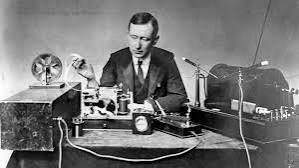
Marconi revolutionized radio communications. The first recorded radio broadcast happened in 1906 on Christmas Eve. Canadian Reginald Fessenden, also named father of radio, worked with Edison in New Jersey for years to improve radio waves by transmitting sound like human voices and he proved it accomplishable with the first audible broadcast on Christmas Eve. Fessenden introduced the small ensemble playing Christmas tunes and he would end the show, “Goodnight to all.”
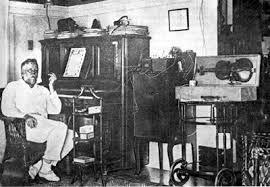

January 13, 1910 was the first live public broadcast from the Metropolitan Opera House in New York. Radio communication proved effective in World War I, but a decade later in 1920 marked a historical event when Pittsburgh station KDKA aired the first commercial broadcast in America on Election Day, November 2, to announce the results of the Harding and Cox. The success of the broadcast inspired other stations to start their own broadcast programs, and thus, this paved the road for the Golden Age of Radio in America.
In the 1920’s, From 1930 through to the 1940’s commercial radio programs aired with programs that entertained families in the privacy of their homes. The function of radios wasn’t limited to homes, but also on battlefields, in the air, and on the seas in both World Wars I and II.
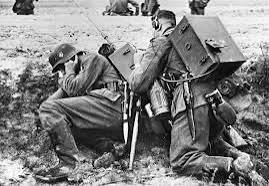

Radio programs allowed its audiences to visualize performances and favorites brought families together to enjoy their favorites: The Jack Benny Program, Amos ‘n’ Andy, Dick Tracy, Burns and Allen… a few of so many. RCA - later became NBC, CBS, and ABC were the biggest networks that contracted celebrities and their sponsors that were recorded in New York City or Hollywood. During the birth of television, shows would move from NYC to Hollywood as programs started to converge over from sound to sight.
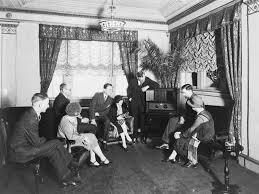
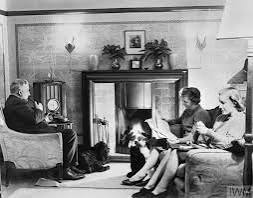
If ever you get an opportunity to listen to a radio program, do so with an open mind. You’ll be amazed between the difference. Until next time… aloha oe.
Photos: *BBC, Britannica, The Canadian Encyclopedia, Wikipedia, Getty Images
#movie talk#movie time#old time radio#review#1950s#1930s#1920s#hollywood history#reviews#1940s#old hollywood#golden age#golden hour#entertainment#inventions#history#historical
8 notes
·
View notes
Text
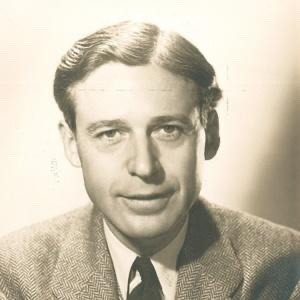
Playwright/screenwriter Howard Koch was born on December 12, 1901 #botd
9 notes
·
View notes
Photo






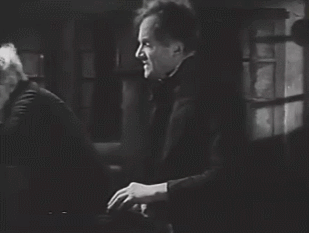



25 Days of A Christmas Carol
In order to celebrate the season, Charles Dickens’ masterpiece and its many adaptations, I will be posting a gifset of a different version of A Christmas Carol each day of December until the 25th! (+ a prelude on November 30 because I couldn’t help myself).
Simply follow my blog or the tag #25acc.
Starting November 30, 2022
Prelude: A Christmas Carol (2019)
December 1: A Christmas Carol (2001)
December 2: Scrooge, or Marley’s Ghost (1901)
December 3: A Christmas Carol (1969)
December 4: A Christmas Carol (1954)
December 5.1: The Stingiest Man In Town (1978)
December 5.2: The Stingiest Man In Town (1956)
December 6: A Christmas Carol (1926)
December 7: A Christmas Carol (1993)
December 8: Scrooge (1935)
December 9: A Christmas Carol (1971)
December 10: The Christmas Carol (1949)
December 11: Mr. Magoo’s Christmas Carol (1962)
December 12: Scrooge (1951)
December 13: Brer Rabbit’s Christmas Carol (1992)
December 14: Scrooge (1970)
December 15: A Christmas Carol (2009)
December 16: Scrooged (1988)
December 17: A Carol For Another Christmas (1964)
December 18: A Christmas Carol (1982)
December 19: A Christmas Carol (1997)
December 20: The Muppet Christmas Carol (1992)
December 21: A Christmas Carol: The Musical (2004)
December 22: A Christmas Carol (1984)
December 23: Doctor Who: A Christmas Carol (2010)
December 24: Mickey’s Christmas Carol
December 25: A Christmas Carol (1999)
Bonus December 26: Un Chant De Noël (Youtube Short, 2018)
Bonus December 27: A Christmas Carol (1910)
Bonus December 28: Barbie In A Christmas Carol (2008)
Bonus December 29: Weihnachtslied in Prosa oder Eine Geistergeschichte zum Christfest (1960)
Bonus December 30: Scrooge, Canto di Natale (Musical 2014)
Bonus December 31: A Christmas Carol (1938)
#25acc#a christmas carol#my edits#ebeneezer scrooge#charles dickens#yes i actually know that many versions i love it so much#and i thought this would be a fun little advent calendar
51 notes
·
View notes
Text







OTD in Music History: Natalie Rachmaninoff nee Satin (1877 - 1951), the beloved wife of legendary composer, conductor, and pianist Sergei Rachmaninoff (1873 - 1943), dies of a heart attack in New York City.
Sergei and Natalie first met each other as young music students during Easter 1888. Years later, when Rachmaninoff came to room with the Satin family, Natalie recalled what happened:
"In September 1901, my parents finally succumbed to my pleas to be allowed to marry Sergei. All that was left was to obtain legal permission -- which was not easy, since we were closely related [NB: They were first cousins]. My mother took on the challenge with her one-of-a-kind energy and zeal; she bustled all throughout winter, and only in March it transpired that a petition had to be sent to the Czar. The wedding was postponed till the end of April, due to the arrival of Lent. Early in April, Sergei went to Ivanovka and sat down to write twelve romances [NB: These were published as the 12 Romances for Voice and Piano, Op. 21], deciding to turn out one daily in order to earn money for a joint trip to Italy after the wedding."
Of their actual wedding day, Natalie later wrote:
"We were wed on 29 April 1902, on the outskirts of Moscow, in some regimental church. I rode in the carriage in my wedding dress, with the rain pouring down relentlessly. The sole entry into the church was via a long succession of barracks. The soldiers stared at us in amazement..."
Like her famous husband, Natalie was a highly accomplished pianist. In fact, in 1938, The RCA Victor record label actually recorded the couple playing Rachmaninoff's four-hand piano duet, "Polka Italienne."
PICTURED: A handwritten letter that Natalie sent to two fans of Sergei's music in December 1943, after they reached out to her in the wake of his death to offer their condolences.
Natalie included with her response a small but very poignant treasure -- a monogrammed handkerchief that had belonged to her late husband (also pictured).
#Natalie Rachmaninoff#Sergei Rachmaninoff#Rachmaninoff#composer#classical composer#classical music#music history#Orchestra#Piano Concerto#Piano#Concerto#Concert#Bolshoi Theatre#Symphony#conductor#conducting#Symphony Concerts#Symphony Orchestra#concert pianist#pianist#Suite#Cadenza#Opera#Bel Canto#Song of the Nightingale#The Angel#Songs#Vocalise#Night
11 notes
·
View notes
Text
Odds & Ends: December 8, 2023
The Bishop’s Wife. I watched this oft-overlooked Christmas movie (made in 1947) last week and really enjoyed it. A bishop struggling to build a new cathedral prays to God for help. God sends an angel named Dudley (played by the ever-suave Cary Grant) to help the bishop. However, Dudley’s attention turns towards helping the bishop’s neglected wife. Romantic tension and a Christmas transformation ensue.
Ascent Chocolate Peanut Butter Whey Protein. Supplementing with whey protein is an easy way to make sure your body gets all the protein it needs, and I drink one whey protein shake each day. Ascent makes my favorite whey protein; it’s clean — no artificial sweeteners or flavors — and tastes good. I’ve always gotten the straight chocolate flavor, but recently discovered the chocolate peanut butter variety and am really digging it.
Claus.com. I’ve been visiting Claus.com every Christmas since 1995, when I was a 12-year-old. It’s a virtual Santa Claus village that hasn’t changed at all in nearly 30 years. It’s all done with HTML. It’s like stepping into an internet time capsule. When I looked into who runs claus.com, it looks like it’s owned by Universal Enterprises, Inc., a mechanical contracting company in Ohio. I have so many questions. Why is a mechanical contracting company in Ohio running the oldest Santa Claus website on the web? Why have they kept the same design for 30 years? This is a Verge.com article waiting to happen. Thanks for the Christmas memories, Claus.com and Universal Enterprises.
The Rise of Theodore Roosevelt by Edmund Morris. I’ve read a lot of TR biographies. Edmund Morris’ The Rise of Theodore Roosevelt was the first one I read way back in 2006, and it’s still my favorite. The book is the first in Morris’ biographical trilogy on TR and covers Roosevelt’s life from his birth in 1858 to his ascent to the U.S. presidency after the assassination of William McKinley in 1901. It details TR’s inspiring transformation from a sickly child into a dynamic statesman, capturing his personal and political growth amidst the backdrop of American expansionism and reform. The rest of Morris’ trilogy is a must-read as well.
Quote of the Week
Some day, in years to come, you will be wrestling with the great temptation, or trembling under the great sorrow of your life. But the real struggle is here, now, in these quiet weeks. Now it is being decided whether, in the day of your supreme sorrow or temptation, you shall miserably fail or gloriously conquer. Character cannot be made except by a steady, long-continued process.
―Phillip Brooks
The post Odds & Ends: December 8, 2023 appeared first on The Art of Manliness. http://dlvr.it/Szv2jd
1 note
·
View note
Text
Chinese New Year Animal - The Ox
Year of the Ox … is this your animal? The Ox is an Earthly branch, and is yang.
Years: 1913, 1925, 1937, 1949, 1961, 1973, 1985, 1997, 2009, 2021, 2033

Chinese: 牛年 (Niú nián ‘Ox year’)
Year/Date/Element:
2033 - Jan. 31, 2033 - Feb. 18, 2034 - Water Ox
2021 - Feb. 12, 2021 - Jan. 31, 2022 - Metal (Gold) Ox
2009 - Jan. 26, 2009 - Feb. 13, 2010 - Earth Ox
1997 - Feb. 7, 1997 - Jan. 27, 1998 - Fire Ox
1985 - Feb. 19, 1985 - Feb. 8, 1986 - Wood Ox
1973 - Feb. 3, 1973 - Jan 22, 1974 - Water Ox
1961 - Feb 15, 1961 - Feb. 4, 1962 - Metal (Gold) Ox
1949 - Jan. 29, 1949 - Feb. 16, 1950 - Earth Ox
1937 - Feb. 11, 1937 - Jan. 31, 1938 - Fire Ox
1925 - Jan. 24, 1925 - Feb. 12, 1926 - Wood Ox
Personality: Oxes are known for their diligence, dependability, strength and determination.
Personality in relation to their element:
Wood Ox: Restless, decisive, straightforward, always willing and ready to defend the weak and helpless
Fire Ox: Short-sighted, selfish, narrow-minded, impersonal, practical
Earth Ox: Honest, prudent, has a strong sense of responsibility
Metal (Gold) Ox: Hardworking, active, busy, popular among friends
Water Ox: Hardworking, ambitious, tenacious, ability to endure hardship, has a strong sense of justice, keen observational abilities
Compatible Zodiac Signs with an Ox:
Rat, Snake, and Rooster
Least Compatible Zodiac Signs with an Ox:
Tiger, Horse, Goat, and Monkey
Lucky things for Oxes:
Lucky numbers: 1, 4, and numbers containing them (like 14 and 41)
Lucky colors: white, yellow, green
Lucky flowers: tulip, peach blossom
Lucky direction: north, south
Unlucky things for Oxes:
Unlucky color: blue
Unlucky numbers: 5 and 6, and numbers containing them (like 56 and 65)
Unlucky direction: southwest
Unlucky months: the 4th, 10th, and 12th Chinese lunar month
Best Careers for Oxes:
Agriculture, manufacturing, pharmacy, mechanics, engineering, draftsmanship, artistry, politics, real estate, interior design, painting, carpentry, or quarry work
Health for Oxes:
Oxes are strong and robust, they are fairly healthy and live long lives with little illness.
Famous Ox People:
Barack Obama: born on August 4, 1961, a Metal Ox
Vincent Van Gogh: born on March 30, 1853, a Water Ox
Walt Disney: born on December 5, 1901, a Gold Ox
Margaret Thatcher: born on October 13, 1925, a Wood Ox
Found all this info on Chinese Zodiac: 12 Animal Signs, Compatibility, Horoscopes (chinesenewyear.net)
Xīn nián kuài lè
R. J. Davies
A Riveting Jacked-In Dreamy Mind-Bender
RJ Davies - Science Fiction Author, Maddox Files, Novels
#R. J. Davies#R. J. Davies Author#Rhonda Davies#Rhonda Davies Author#science fiction author#mystery author#author of Maddox Files#Chinese New Year#Chinese Zodiac The Ox#The Ox#Xīn nián kuài lè
3 notes
·
View notes
Photo










On 12 December 1901, the first transatlantic wireless transmission was received on Signal Hill by Guglielmo Marconi in an abandoned fever and diphtheria hospital, which has since been destroyed by fire. The transmission, in Morse code, originated from his Poldhu Wireless Station, Cornwall, UK.
#12 December 1901#first transatlantic wireless transmission#received#St. John's#Signal Hill#Cabot Tower#Newfoundland#summer 2015#travel#original photography#Atlantic Ocean#Canada#cityscape#architecture#seascape#tourist attraction#landmark#anniversary#Canadian history#St. John's Harbour#Narrows of St. John's Harbour#Cape Spear#landscape#technology#ship
0 notes
Photo

William Stanley Beaumont Braithwaite (December 6, 1878 – June 8, 1962) was an African-American writer, poet, literary critic, anthologist, and publisher. His work as a critic and anthologist was widely praised and important in the development of East Coast poetry styles in the early 20th century. At the age of 12, upon the death of his father, he was forced to quit school to support his family. When he was aged 15 he was apprenticed to a typesetter for the Boston publisher, Ginn & Co., where he discovered an affinity for lyric poetry and began to write his poems. After early publications in periodicals, he published his first collection of 63 poems, Lyrics of Life and Love in 1904. From 1901 to 1902, he served as an editor of the Boston-published Colored American Magazine. By 1906 he had been accepted as a member of the prestigious Boston Authors Club. From 1905 to 1931 he wrote for The Boston Evening Transcript, contributing columns about contemporary poets and an annual survey of the field. He wrote articles, reviews, and poetry for many other periodicals and journals, including the Atlantic Monthly, The Nation, New York Times, The New Republic, The Crisis, Opportunity, and Colored American Magazine. He began publishing anthologies on the poetry of various periods, such as the Georgian and Elizabethan eras. In 1918 he was awarded the Spingarn Medal by the NAACP. #africanhistory365 #africanexcellence https://www.instagram.com/p/Cl0vmEwOqAF/?igshid=NGJjMDIxMWI=
2 notes
·
View notes
Photo

Dan Gunn (A'12)
Art Basel Miami Beach w/ moniquemeloche
Miami Beach Convention Center
1901 Convention Center Drive, Miami Beach, FL 33139
November 29—December 3, 2022
2 notes
·
View notes
Text
Events 2.8 (before 1950)
421 – Constantius III becomes co-emperor of the Western Roman Empire.
1238 – The Mongols burn the Russian city of Vladimir.
1250 – Seventh Crusade: Crusaders engage Ayyubid forces in the Battle of Al Mansurah.
1347 – The Byzantine civil war of 1341–47 ends with a power-sharing agreement between John VI Kantakouzenos and John V Palaiologos.
1587 – Mary, Queen of Scots is executed on suspicion of having been involved in the Babington Plot to murder her cousin, Queen Elizabeth I.
1601 – Robert Devereux, 2nd Earl of Essex, unsuccessfully rebels against Queen Elizabeth I.
1693 – The College of William & Mary in Williamsburg, Virginia, the second-oldest institution of higher education in the Thirteen Colonies, is granted a charter by King William III and Queen Mary II.
1807 – Napoleon defeats the coalition forces of Russian General Bennigsen and Prussian General L'Estocq at the Battle of Eylau.
1817 – An army led by Grand Marshal Las Heras crosses the Andes to join San Martín in the liberation of Chile from Spain.
1837 – Richard Johnson becomes the first and only Vice President of the United States chosen by the Senate.
1865 – Delaware refuses to ratify the Thirteenth Amendment to the U.S. Constitution, delaying the criminalization of slavery until the amendment's national adoption on December 6, 1865. The amendment is ultimately ratified by Delaware on February 12, 1901, the 92nd anniversary of Abraham Lincoln's birth.
1879 – Sandford Fleming first proposes the adoption of Universal Standard Time at a meeting of the Royal Canadian Institute.[22][23]
1879 – England's cricket team, led by Lord Harris, is attacked in a riot during a match in Sydney.
1885 – The first Japanese immigrants arrive in Hawaii.
1887 – The Dawes Act is enacted, authorizing the U.S. President to divide Native American tribal land into individual allotments.
1904 – Japanese forces launch a surprise attack against Russian-controlled Port Arthur, marking the start of the Russo-Japanese war.
1904 – The Dutch Colonial Army's Marechaussee regiment led by General G.C.E. van Daalen launch a military campaign in the Dutch East Indies' Northern Sumatra region, leading to the deaths of thousands of civilians.
1910 – The Boy Scouts of America is incorporated by William D. Boyce.
1915 – D. W. Griffith's controversial landmark film The Birth of a Nation premieres in Los Angeles.
1924 – The first state execution in the United States by gas chamber takes place in Nevada.
1937 – Spanish Civil War: Republican forces establish the Interprovincial Council of Santander, Palencia and Burgos in Cantabria.
1942 – World War II: Japan invades Singapore.
1945 – World War II: British and Canadian forces commence Operation Veritable to occupy land between the Maas and Rhine rivers.
1945 – World War II: Mikhail Devyataev escapes with nine other Soviet POWs from a Nazi concentration camp in Peenemünde, Usedom.
1946 – The People's Republic of Korea is dissolved in the North and replaced by the communist-controlled Provisional People's Committee of North Korea.
0 notes
Text
Old Wyoming State Penitentary
by Scott A. Johnson
Imagine yourself confined to a room five feet by seven feet with only a bare cot and toilet. Down the hallway, terrified screams and sadistic laughter echo throughout the night, reminding you that you live in what may be as well be described as one of Dante's lower circles of hell. You'll be all right, you tell yourself, so long as you keep to your tasks and don't make eye contact with anyone who lives nearby.
Now imagine that same room shared with up to five other men-a prison cell in every breath drawn might be the last and every setting heralds new terrors that come in the night.
A New but Fearful Facility
By 1873, the prison in Laramie, Wyoming, was bulging at the seams. Home to convicts from the surrounding areas, it could no longer accept new inmates, yet the stream of new arrivals never let up. The state government decided a new prison was needed, one that could accommodate the high number of miscreants who roamed Idaho at the time. Construction of what would be an enormous structure began in 1888. It took thirteen years, but on December 12, 1901, the Wyoming State Penitentiary in Rawlins opened its doors. The incarcerated were to be assigned meaningful duties that would not only put money in the coffers of both the prison and the state but would also in the prisoners the seed of a work ethic. Over the years, the prisoners manufactured brooms, shirts, and proceesed wool, when they weren't stamping out license plates.
Despite the state's good intentions, the new facility had tiny cells without running water or toilets, and their bare concrete walls bred more than a sense of punishment. They bred madness. Fights were common, as were stabbings and near riots. In just three years, the penitentiary saw several bloody battles between prisoners, one of which involved a prisoner attempting to cut another's heart out. The terrified guards, who sometimes felt themselves the real prisoners, often did nothing.
Such violence could only be tolerated for so long, prompting the construction of "the Hole" in 1906. Being confined to this windowless room was the punishment for anything from refusing to eat dinner to murder. The guilty were chained to a wall in the room and left in total darkness. During their stay, they were attended to only briefly and were fed miniscule amounts of bread and water.
It wasn't until 1914, years after the prison had already come dangerously close to its capacity, that the penitentiary cells were equipped with toilets, washbowls, and running water-cold only, however.
After several escape attempts by inmates, high concrete walls replaced the wooden stockades surrounding the prison buildings in 1915. The convicts were pressed into service to erect the walls and guard towers, partially to make them aware that escaping would be impossible.
Rough Justice
Executions were commonplace, either by hanging or by gas, but it wasn't just the state that meted out capital punishment. Prison guards often enforced their own bran of justice or simply turned a blind eye to prisoner-devised hangings. In one case, the person hanged didn't die immediately, prompting his executioners to haul hi up by the rope and toss him over the rail for a second time.
By the late 1970s, tales of abuse and overcrowding reached the state. Stories involving the horrors of the Hole and other tortures, including thumb cuffs and the insidious Oregon Boot (a heavily weighted steel shoe), reached the proper ears, prompting an investigation. In 1981, the Wyoming State Penitentiary closed its doors for good, leaving decades of abuse and agony behind.
It is impossible to identify the restless souls that never left what's called the Old Pen; they're simply too numerous. What is clear, however, is that in my places whatever remains is angry and resentful-and not at all shy about showing its feelings.
Tour guides and tourists alike have reported seeing shadowy figures disappearing around corners and malicious presences throughout the structure. There are, however, a few places deemed hotbeds of activity. The showers, were countless inmates were attacked, violated, or even killed, are the setting of many a story. Also on the list of places to be avoided are the former Death Row and the gas chamber.
However, most agree that the worst hauntings occur in the black pit called the Hole. Whatever lurks there, according to those whose job it is to walk the halls, is angry and crazed, threatening anyone who enters. There are also specific cells in which voices are heard and presences felt. Also well known is Guard Tower No. 9, in which a guard committed suicide.
The buildings stand as they did, with cell walls still bearing the markings and artwork of those who occupied them. Death Row cells are adorned with photos of those prisoners who spent their last moments inside. The old prison cemetery is visible on the grounds, and many of the tombstones lie broken or stand propped against a fence.
In other words, the prison looks no less ominous for the lack of new prisoners. Time will tell whether the awful energy generated within its walls is here to stay.
0 notes
Text







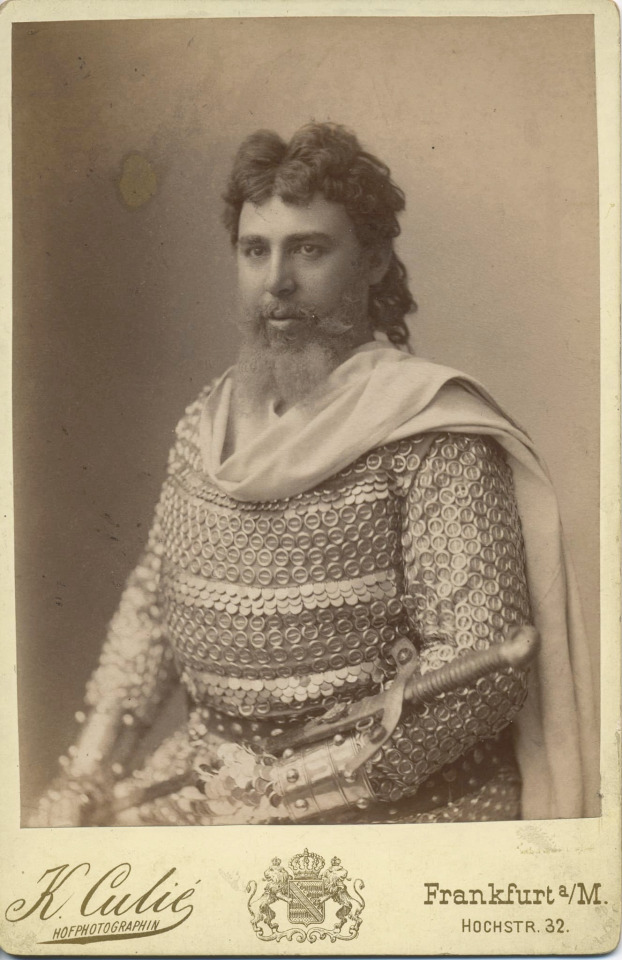





On June 10, 1865, the world premiere of "Tristan and Isolde" by R. Wagner took place in Munich.
„Isolde… wie schön…“
Here are some of the first tenors to have sung the role of Tristan over the years and contributed to the success of this work through their dedication.
Erik Schmedes (27 August 1868, in Gentofte, Denmark – 21 March 1931, in Vienna), Danish heldentenor.
Alois Pennarini (Vienna 1870 - Liberec, Czechoslovakia 1927), Austrian-Hungarian first spinto tenor then heldentenor.
Modest Menzinsky (29 April 1875 in Novosilky, Galicia - 11 December 1935 in Stockholm), Ukrainian heroic tenor.
Karl Kurz-Stolzenberg
Adolf Gröbke (May 26, 1872 Hildesheim - September 16, 1949 Epfach), German tenor.
Iwan Ershov (November 8, 1867 – November 21, 1943), Soviet and Russian dramatic tenor.
Alfred von Bary (January 18, 1873 in Valletta, Malta - September 13, 1926 in Munich), German tenor.
Alexander Bandrowsky (April 22, 1860 in Lubaczów - May 28, 1913 in Cracow), Polish Tenor.
Jacques Urlus (6 January 1867 in Hergenrath, Rhine Province – 6 June 1935 in Noordwijk, Netherlands), Dutch dramatic tenor.
Francesc Viñas (27 March 1863 – 14 July 1933), Spanish tenor.
Richard Schubert (Dessau, Germania; December 15, 1885 - Oberstaufen, Germania; October 12, 1959), German tenor.
Dr. Julius Pölzer (April 9, 1901 in Admont - February 16, 1972 in Vienna), Austrian tenor.
Giuseppe Borgatti (Cento, 17 March 1871 – Reno di Leggiuno, 18 October 1950), dramatic tenor. (with Magini-Coletti as Kurwenal)
Antonio Magini-Coletti (17 February 1855 – 21 July 1912), Italian baritone.
#opera#classical music#music history#bel canto#composer#classical composer#aria#tenor#classical studies#Tristan and Isolde#classical musician#classical musicians#musician#musicians#classical history#historian of music#history#maestro#chest voice#Tristan und Isolde#Richard Wagner#Wagner#classical singer#classical singing#opera history#music#classical
4 notes
·
View notes